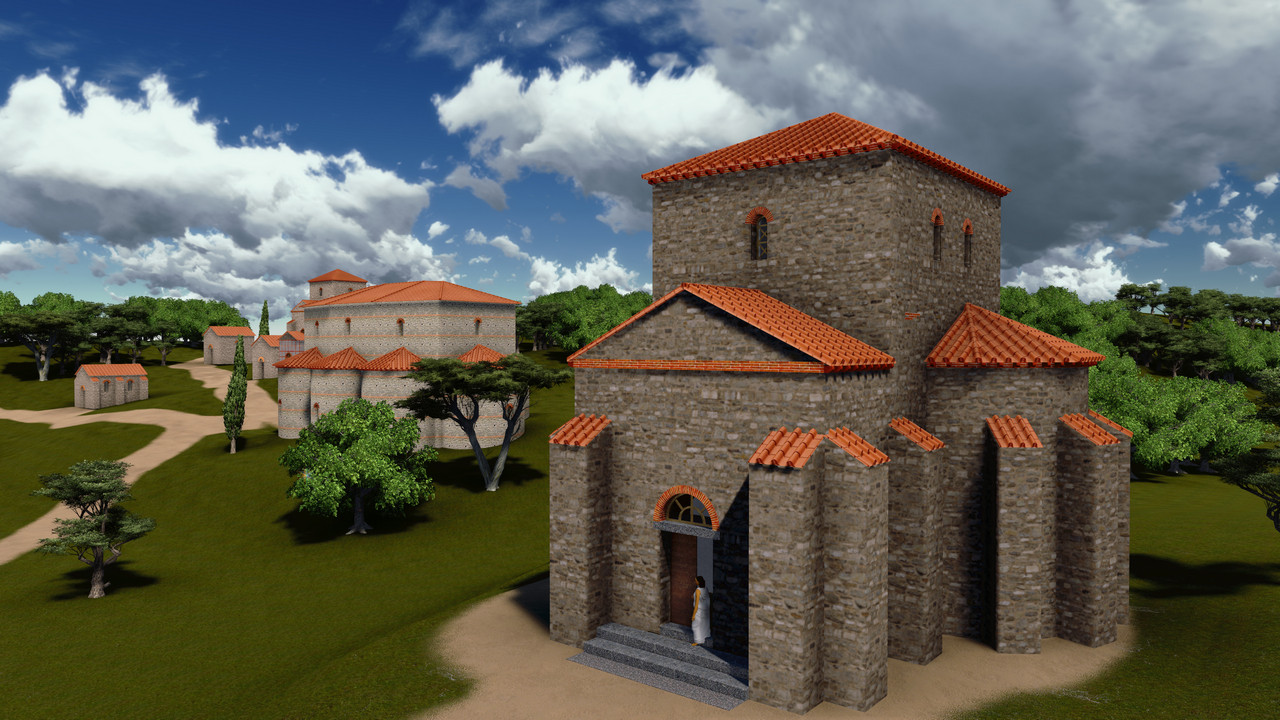Some Roman World Heritage stuff
-
Hi, Gaieus:
I am just guessing, (believe me, I am no render expert) but maybe some atmospheric effects to soften the starkness of the stone walls could make the building "settle down"? Also, maybe the point of view and the way the hill falls off seem to contribute to the unwanted floating effect?Edit: Perhaps, randomly add some baldness here and there that extends further from the dripline?
-
In fact, probably even the current "sky" will be removed (like here). The more random and extensive, bare blotches may be a good idea. (Good that I have the file with a bunch of layers so I can experiment without screwing up the final image)


-
Hi, Gaieus:
It seems the front steps may need some "blending"? -
They are actually huge stones (5 in a row) and I even rounded their edges and correctly UV mapped them but this is not visible from here.

-
Hi, Gaieus:
Do you have any historical data to suggest how the upper edges of the terra cotta caps on the buttresses interfaced with the stone? This transition is an age old problem as far as moisture protection goes, especially in today's pallette of materials. There certainly would not be any immediate problem in solid stone masonry, but leaching of the mortar due to continual moisture would certainly become a problem in 50 years or so. I understand the Romans actually developed a form of hydraulic concrete. Perhaps they had a similar mortar? -
I really have no idea. Most probably these details are what have been repaired several times even on existing buildings and the original has not survived. Here, in Hungary, they still use the technique (on older buildings) that they simply smear a thick layer of mortar in places like that hoping the owner will not notice.

-
Well, mortar itself has some waterproofing abilities for the very short term. But it is extended cycles of saturation and drying that does the damage.
-
Yeah, I have just checked the building in the neighbouring lot and that mortar is all cracked. I guess maintenance is always needed...
-
Yahhh ... ok I'll have to go and try some textures on my work, your models look quite good, but also time consuming ...
-
Indeed. First finding the right texture then applying it correctly (like around arches, corners...) indeed often takes longer than the whole modelling phase. But eventually it can add quite a great deal of realism to the model.
-
Okay, playing around in Lumion... This is the same building (not much has changed) but now I built some dozen of the other ones.

Then an overview of the whole site (some material tweaking will still be needed here and there)
For the time being, not each is fully elaborate (I just had to render a big poster so shovelled all the models together). Not all the chapels we know of are in the image - only the ones that can be visited (there are some 10 more).Now I need to add the whole town (to the south) and we are ready.

Advertisement







